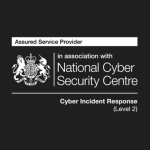Phishing scams are a type of cyber attack that targets both individuals and organisations with the aim to steal sensitive information or money. These scams typically involve cyber criminals sending fraudulent emails, text messages or calls that appear to come from legitimate sources, such as banks, online retailers, or social media platforms.
In recent years, phishing attacks have become increasingly sophisticated and prevalent, making them harder to detect. Victims of phishing attacks suffer not only financial losses, but may also face difficulties in restoring their credit and reputation.
There were an estimated 255 million phishing attempts last year, a 61% jump over the prior year, and more than 70% of these emails were opened by the recipient.
In this blog, we will explore the dangers of phishing scams in more detail, and provide tips on how to spot and avoid them. We will also discuss why organisations should take proactive steps to protect themselves against these threats, including implementing security measures and educating their employees on best practices.
The Most Common Types of Phishing Attacks
Phishing scams come in many different forms and can use a variety of tactics to deceive their victims.
Email Phishing Attacks
This is the most common type of phishing attack, in which the attacker sends a fraudulent email that appears to be from a legitimate source, such as a bank, an online retailer, or a social media platform. The email may ask the victim to click on a link or download an attachment, which can then install malware on their device or direct them to a fake login page to steal their credentials.
Smishing Attacks
This is a type of phishing attack that targets mobile devices through SMS or text messages. The attacker may send a message with a link or ask the victim to call a phone number, or trick them into sending over money or sensitive data.
Vishing Attacks
Know as ‘voice phishing’, this type of attack targets users via phone call, often impersonating a bank or someone the victim knows and trusts. They will use a sense of urgency or fear to convince the victim to send money or sensitive information.
Spear Phishing Attacks
This is a more targeted type of phishing attack that is aimed at specific individuals or organisations, often using information gathered from social media or other sources. The attacker may impersonate a trusted contact or use a convincing pretext to trick the victim into divulging sensitive information or performing an action that benefits the attacker.
Whaling Attacks
This is a type of spear phishing attack that targets high-level executives or individuals with access to sensitive company information. The goal is to trick the victim into revealing confidential data or authorising a fraudulent transaction.
Pharming Attacks
In this type of attack, the cyber criminal redirects the victim to a fake website by altering the DNS settings or using a malware-infected computer. The fake website looks identical to the legitimate one, and the goal is to steal the victim’s sensitive information.
How to Spot a Phishing Attack
To avoid falling victim to these types of attacks, it’s important to be aware of some best practices for spotting phishing attacks.
Poor grammar and spelling – One of the tell-tale signs of a phishing email is grammatical errors. If you notice an email has multiple spelling errors and is poorly written, it could indicate that it’s not from a legitimate source.
Sender email address – Phishing emails often use fake or slightly altered email addresses that may look similar to legitimate ones. Hover over the sender email address to check it’s not masked, and be wary of emails that come from unknown senders or use suspicious domain names.
Malicious links – Fraudulent emails often contain links that direct the victim to a fake login page or a malware-infected website. Before clicking on any link, hover over it to see the actual URL and make sure it matches the legitimate website.
Suspicious attachments – Phishing emails may contain attachments that can install malware or ransomware on the victim’s device. Be cautious of any unsolicited attachments, especially from unknown senders.
Sense of urgency – Phishing attacks often use a sense of urgency or fear to prompt victims to take immediate action, such as claiming that something is overdue, or a supposed member of senior management asking you to make an urgent purchase or payment. Always contact the sender via the contact details you have for them, or details that are publicly listed, to confirm it’s a legitimate request before you take action.
How to Prevent a Phishing Attack
In addition to these best practices for spotting an attack, organisations can take several measures to prevent phishing attacks.
Implementing anti-phishing software – This type of software can help detect and block phishing emails before they reach employees’ inboxes. Along with email filtering software, trusted security browser extensions can help detect phishing pages.
Providing staff awareness training – Educating employees on the dangers of phishing attacks and best practices for spotting and avoiding them can help reduce the risk of successful attacks.
Conducting phishing simulations – Regularly testing employees’ ability to spot and report phishing emails can help identify vulnerabilities, gaps in their training, and improve overall security awareness.
Two-factor authentication (2FA) solutions – 2FA adds an extra layer of security to online accounts by requiring users to provide a second form of authentication, such as a code sent to their phone, in addition to their password. This can help prevent phishing attacks that attempt to steal login credentials, as the threat actor will need access to this secondary login code.
Protect Your Organisation from Phishing Attacks
Phishing attacks continue to be a serious threat to individuals and organisations alike. By staying vigilant and implementing best practices and security measures, we can all do our part to avoid falling victim to these scams. It’s worth noting that no single anti-phishing solution is fool proof, and it’s always a good idea to use a combination of different strategies to reduce the risk of falling victim to phishing attacks.
At 3B Data Security, our team have extensive experience in preventing and responding to cyber attacks. Our experts can work with your organisations to implement robust security measures, and carry out regular awareness training to ensure your staff know how to spot and respond to an attack. Find out more >>
Our expert team have helped countless organisations that have fallen victim to phishing, among other cyber threats, and need assistance responding and recovering from an attack.
We have a vast amount of experience in dealing with these types of incidents and can quickly respond and support organisations throughout the entire process.
If you need emergency cyber incident response support, get in touch with our team of experts today.







